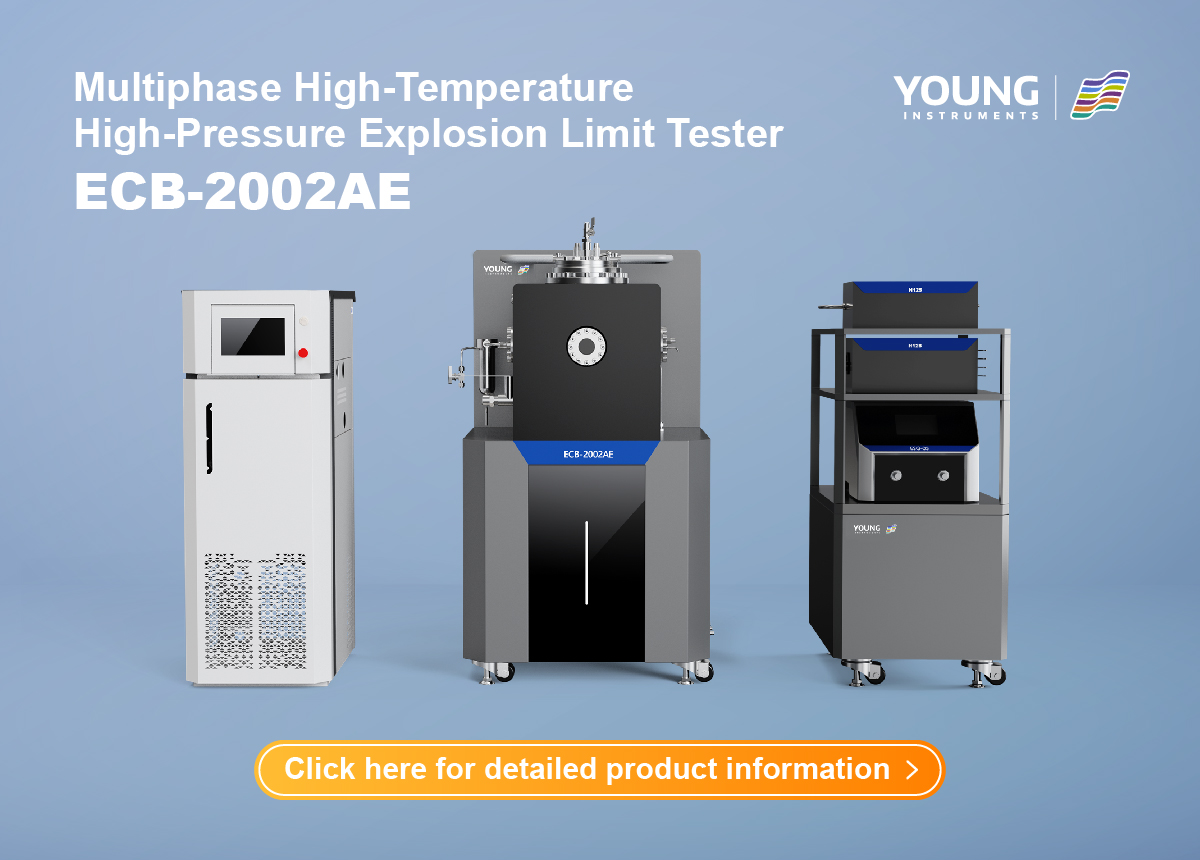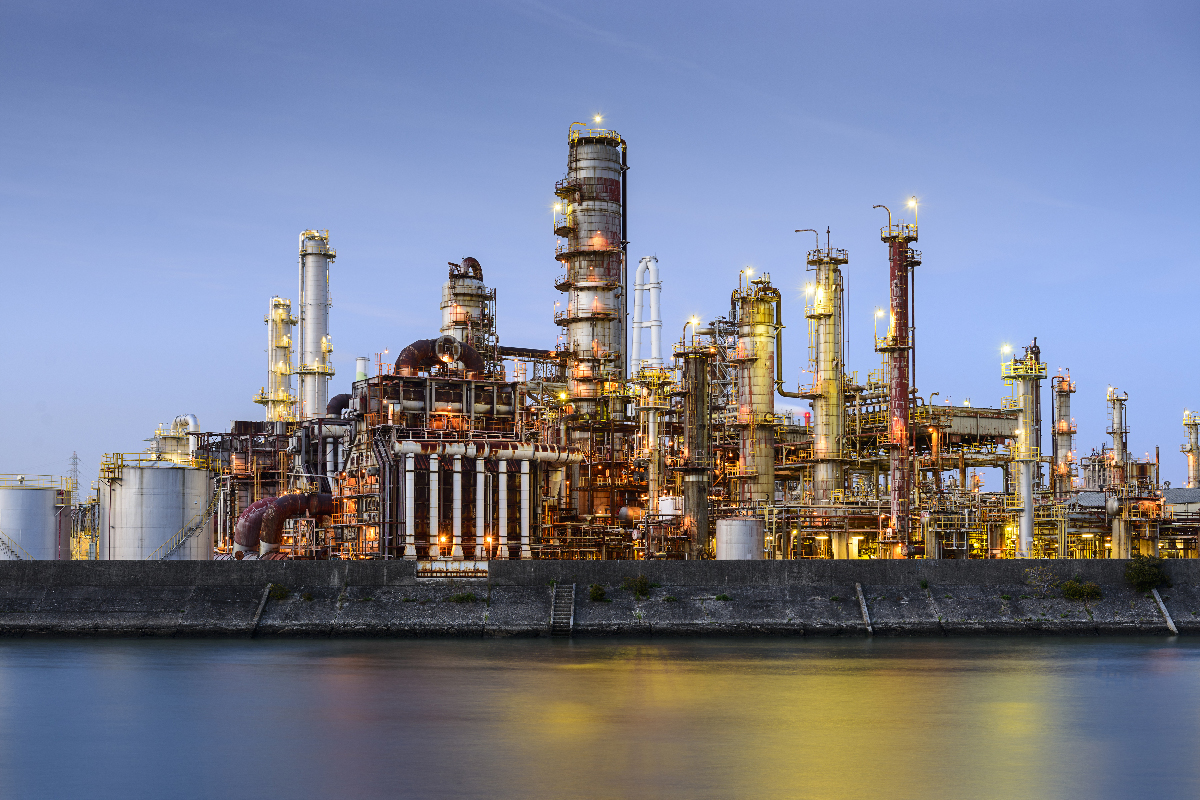Multiphase High-Pressure Flammable Limits Tester: Precision in Hazardous Environments
Flammable Limits Tester In the petrochemical production process, mixed flammable gases easily ignite and explode, posing serious threats to life and property. Explosion limits, crucial parameters indicating flammable gas explosion characteristics, become more hazardous with lower explosive limits (LEL) and higher upper explosive limits (UEL). Controlling these limits is vital for the design of petrochemical production units and process adjustments.
Chemical processes often involve areas or vessels with high concentrations of flammable gases (vapors) under high temperatures and pressures, such as high-pressure reactors and towers. Accurately determining the explosion range of flammable gases (or vapors) under these conditions is essential for identifying risks, selecting monitoring instruments, and implementing safety measures like inerting and explosion suppression effectively in chemical processes.
Multiphase High-Pressure Flammable Limits Tester
Product Overview Flammable Limits Tester
The Multiphase High-Pressure Flammable Limits Tester/Multiphase High-Pressure Explosion Limit Tester is an advanced instrument engineered to assess explosive characteristics under elevated pressure conditions. Compliant with ASTM E918, ASTM E2079, EN 1839, EN 15967, and UL9540A standards, it accurately determines explosion limits, minimum oxygen concentrations, explosion pressures, and rate of pressure rise. This makes it indispensable for industries requiring a precise understanding of material explosivity for safety and regulatory compliance.
Versatility in Applicable Fields and Modular Design
Designed for applications such as lithium battery manufacturing and combustible gas analysis, its modular design offers flexibility to meet diverse testing demands. The system accommodates varied experimental processes with customizable configurations. Constructed from 316L stainless steel, its corrosion-resistant test chamber includes jacketed temperature control, ensuring efficient and stable testing conditions critical for dependable results.
Advanced Features and Functionalities
Equipped with a high-efficiency vacuum pump, the tester adjusts cleaning parameters to eliminate residual effects, ensuring pristine testing conditions for each experiment. A precision measurement and control system utilizes a compensation gas mixing algorithm to maintain precise gas concentrations. Additionally, a stirring function promotes uniformity within the gas mixture, supported by explosion-proof pressure sensors with robust performance in high temperatures, enhancing measurement accuracy under demanding conditions.
Safety Measures and Operational Parameters
Safety is prioritized with integrated features like safety valves, rupture discs, and a comprehensive safety interlock system, safeguarding laboratory personnel. Operational within -5°C to 45°C temperature and <95% RH humidity conditions, the test container controls temperatures from room temperature to 200°C and sustains a maximum gas pressure of 1 bar. Designed with a 22.0 MPa container design pressure and capable of handling up to 25.0 MPa with its explosion pressure sensors, it ensures reliable performance in extreme environments while adhering to stringent safety standards.

Explosive Characteristics Analysis
Instrument Principle
The instrument operates by first preparing a specific volume fraction of combustible gas (vapor) mixed with air inside an explosion reaction vessel under precise initial temperature and pressure conditions. The mixture is then ignited using either an electric spark or a hot wire. To determine if an explosion occurs, the instrument measures the increase in explosion pressure, which must exceed the initial pressure by at least 5%. Through systematic adjustments of the combustible gas (vapor) concentration, it identifies both the minimum and maximum concentrations at which explosions can happen.
Operation Process
The operational procedure commences with setting the initial temperature and pressure parameters within the explosion reaction vessel. A carefully calculated volume fraction of combustible gas (vapor) is introduced into the vessel, ensuring uniform distribution throughout. Ignition is initiated by an electric spark or a hot wire, triggering the combustion of the gas-air mixture and initiating the reaction.
Detection and Safety Measures
Upon ignition, the instrument monitors the rise in explosion pressure. Confirmation of an explosion occurs when this pressure exceeds the initial set pressure by at least 5%. This method facilitates precise determination of the explosive limits for various gases by pinpointing the concentration thresholds that induce explosions. The system is equipped with robust safety measures to prevent accidental energy release or unintended reactions, thereby maintaining a controlled environment for safe and accurate explosive testing.
Instrument Advantages and Technical Specifications Flammable Limits Tester
High Automation
The instrument features a real-time display of pressure and temperature parameters, automatic control of gas samples, and automatic calculation and correction of explosion parameters. This high level of automation enhances operational efficiency and ensures precise experimental results.
Ease of Use
Equipped with a high-efficiency vacuum pump, the instrument allows customizable cleaning parameters to thoroughly eliminate residual effects, facilitating a clean starting point for each test. This user-friendly design simplifies maintenance and ensures consistent performance.
Enhanced Safety
Safety is paramount with multiple built-in protections including safety valves and rupture discs. Remote ignition capability further enhances safety by minimizing direct exposure to potential hazards during experiments, ensuring the well-being of laboratory personnel.
Technical Specifications
The instrument operates within a controlled temperature range and accommodates varying gas pressures up to specified limits. It incorporates advanced safety features to mitigate risks associated with explosive testing, making it a reliable choice for precise and secure laboratory environments.
Instrument Application Scope
Testing Combustible Gas Explosive Limits in High-Temperature and High-Pressure Conditions
The instrument conducts tests to determine combustible gas explosion limits, measure maximum explosion pressures, and assess rates of pressure rise in environments with elevated temperatures and pressures. These tests are crucial for evaluating safety parameters in industries handling volatile gases.
Under similar conditions, the instrument evaluates the explosive limits of combustible liquid saturated vapors, measures maximum explosion pressures, and analyzes rates of pressure rise. These tests provide critical insights into the explosive characteristics of liquids in high-temperature and high-pressure scenarios.
Assessment of Combustible Liquid Gas-Liquid Flammability Limits and Pressure Dynamics
Additionally, the instrument tests the flammability concentration limits of combustible liquid gas-liquid two-phase systems under extreme conditions. It accurately measures maximum explosion pressures and rates of pressure rise, crucial for assessing safety thresholds and operational risks in complex industrial environments.
Closing Words Flammable Limits Tester
The Multiphase High-Pressure Flammable Limits Tester excels in accurately measuring explosive characteristics in hazardous conditions. It is indispensable for industries handling combustible gases and liquids, ensuring safety and regulatory compliance through precise data collection. Featuring a sturdy design, extensive testing abilities, and advanced safety measures, it effectively reduces risks in high-temperature, high-pressure settings. By enabling precise detection of explosion limits and pressures, it significantly enhances industrial safety protocols, safeguarding lives and assets.








































